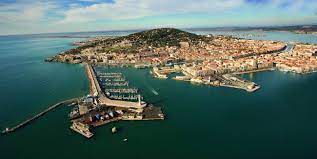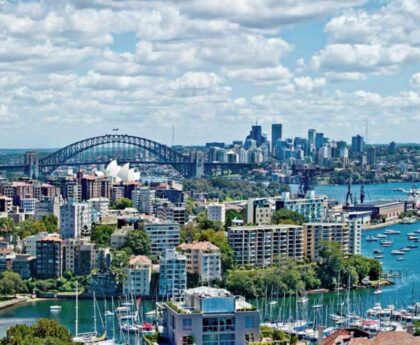France has long been a key player in maritime trade, tourism, and cultural exchange. Its strategic position along both the Atlantic Ocean and the Mediterranean Sea has made it home to some of Europe’s most important seaports. From bustling commercial hubs to charming coastal harbors, seaports in France are vital to the country’s economy and heritage. In this article, we explore the significance of these ports, their history, and their role in modern France.
Historical Significance of French Seaports
France’s maritime history dates back centuries. Coastal cities like Marseille, Le Havre, and Bordeaux have been centers of trade, exploration, and cultural exchange since medieval times. These seaports in France not only served as gateways for goods and people but also facilitated the country’s naval ambitions.
During the age of exploration, French ports were launch points for voyages to Africa, the Americas, and Asia. The bustling docks and warehouses reflected the economic importance of maritime trade. Over time, these ports evolved from simple landing points to complex hubs capable of handling massive cargo volumes.
Major Seaports in France
France is home to several major seaports, each serving unique roles in trade, industry, and tourism.
1. Marseille
Located on the Mediterranean coast, Marseille is France’s largest commercial port. It handles millions of tons of cargo annually, ranging from petroleum and natural gas to consumer goods. Marseille’s port is not just about trade; it also serves as a major cruise ship terminal, welcoming thousands of tourists each year. The port’s deep waters and modern facilities make it a key maritime gateway for Southern Europe.
2. Le Havre

Le Havre is the second-largest port in France and is situated on the English Channel. Known primarily for container shipping, Le Havre serves as a crucial link between France and international markets. The port handles a mix of cargo, including automobiles, machinery, and raw materials. Its modern infrastructure and connectivity to rail and road networks make it a hub for both trade and logistics.
3. Dunkerque
Dunkerque, also on the English Channel, has a rich history and strong industrial presence. This port specializes in bulk goods like coal, steel, and grains. Dunkerque is also known for its ferry services connecting France to the United Kingdom, making it a vital passenger gateway.
4. Bordeaux
Bordeaux’s port on the Garonne River has historically been a center for wine exportation. Today, it remains an important commercial port while also serving as a cultural and tourist destination. Bordeaux’s waterfront combines modern port facilities with historic architecture, reflecting the city’s maritime legacy.
5. Nantes-Saint-Nazaire
Located on the Atlantic coast, this seaport handles a variety of cargo, including aeronautics, automobiles, and chemicals. Nantes-Saint-Nazaire is also a hub for shipbuilding, contributing to France’s maritime industrial strength.
Economic Importance of Seaports in France
Seaports in France are not just gateways for goods; they are essential drivers of the national economy. These ports support industries ranging from shipping and logistics to tourism and shipbuilding.
- Trade and Logistics: French seaports handle imports and exports crucial for the country’s economy. Major ports like Marseille and Le Havre connect France to Asia, the Americas, and Africa.
- Employment: Ports create thousands of jobs, both directly in shipping and logistics and indirectly in related sectors like warehousing, transportation, and manufacturing.
- Tourism: Ports such as Marseille and Nice welcome millions of cruise passengers each year, boosting local businesses and hospitality services.
- Innovation: French seaports invest in modern infrastructure, automation, and sustainable practices, ensuring they remain competitive in global shipping markets.
Tourism and Passenger Services
Beyond commercial activities, seaports in France play a vital role in tourism. Cruise ships docking at Marseille, Nice, and Le Havre allow travelers to explore France’s coastal regions and nearby attractions. Ferry services connect France to the United Kingdom, Spain, and Corsica, making maritime travel a convenient and scenic option.
Seaports also host events, markets, and cultural festivals that attract visitors and celebrate France’s maritime heritage. Waterfront promenades, museums, and historic warehouses often add charm to modern port areas.
Challenges Facing French Seaports
While France’s seaports are vital for trade and tourism, they face challenges in today’s global economy.
1. Environmental Concerns
Port operations can have significant environmental impacts, including air pollution, water contamination, and habitat disruption. French ports are increasingly adopting green technologies to reduce emissions and protect marine ecosystems.
2. Competition
French ports compete with other European ports like Rotterdam, Hamburg, and Antwerp. To maintain relevance, they invest in modern infrastructure, automation, and efficient logistics.
3. Global Supply Chain Disruptions
Events like pandemics, geopolitical tensions, and trade disputes can affect shipping schedules and cargo volumes. French ports must adapt to remain resilient in the face of global disruptions.
4. Labor and Workforce Management
Port operations require skilled labor, and labor strikes or shortages can impact productivity. Managing workforce relations is crucial for maintaining smooth port activities.
The Future of Seaports in France
French seaports are evolving to meet the demands of the 21st century. Key trends shaping their future include:
- Digitalization: Smart ports equipped with automated cargo handling, AI-driven logistics, and digital tracking systems.
- Sustainability: Green shipping initiatives, renewable energy adoption, and eco-friendly infrastructure development.
- Expanded Connectivity: Enhanced rail, road, and inland waterway connections to streamline cargo movement.
- Tourism Growth: Development of waterfront areas and cruise facilities to attract more tourists.
By embracing technology and sustainability, France’s seaports will continue to serve as essential gateways for commerce, tourism, and cultural exchange.
Conclusion
France’s seaports are more than just entry and exit points for goods and passengers—they are vital economic engines, cultural landmarks, and historical treasures. From Marseille’s bustling Mediterranean docks to the historic waterfronts of Bordeaux and Le Havre, these ports demonstrate the country’s long-standing maritime significance.As global trade, technology, and tourism continue to evolve, seaports in France will play an increasingly critical role in connecting the nation to the world while preserving its maritime heritage. Whether for commerce, leisure, or history, France’s ports are gateways that continue to shape the country’s identity and economy.





